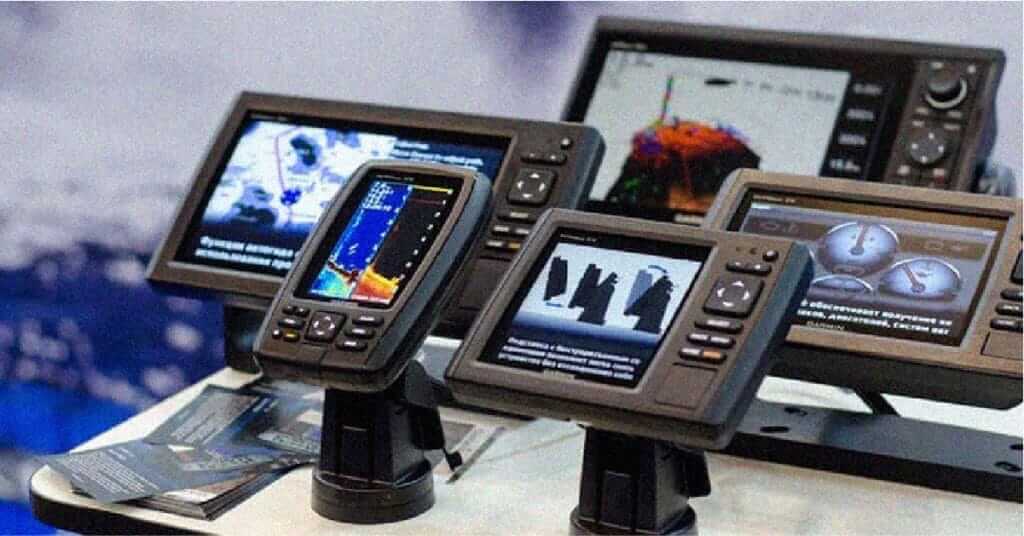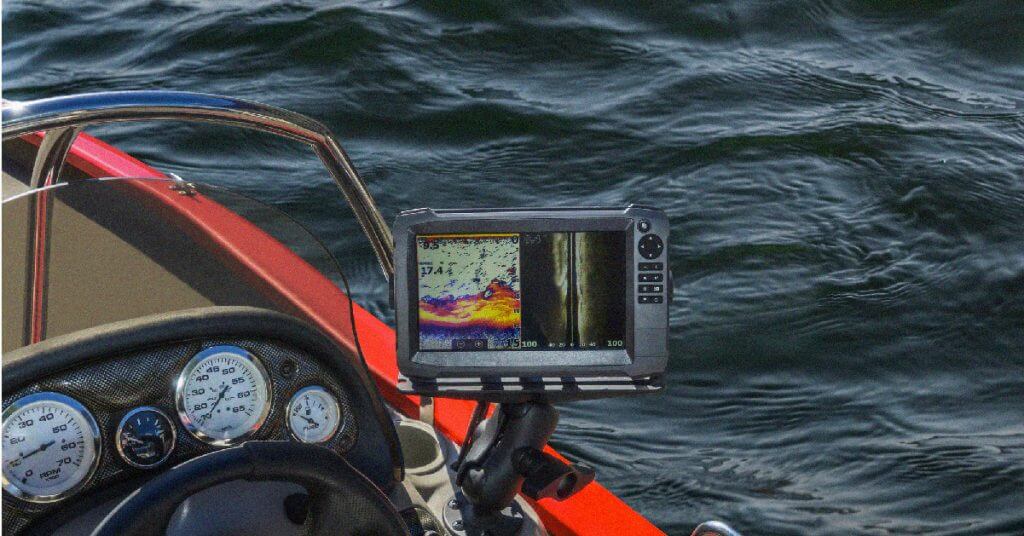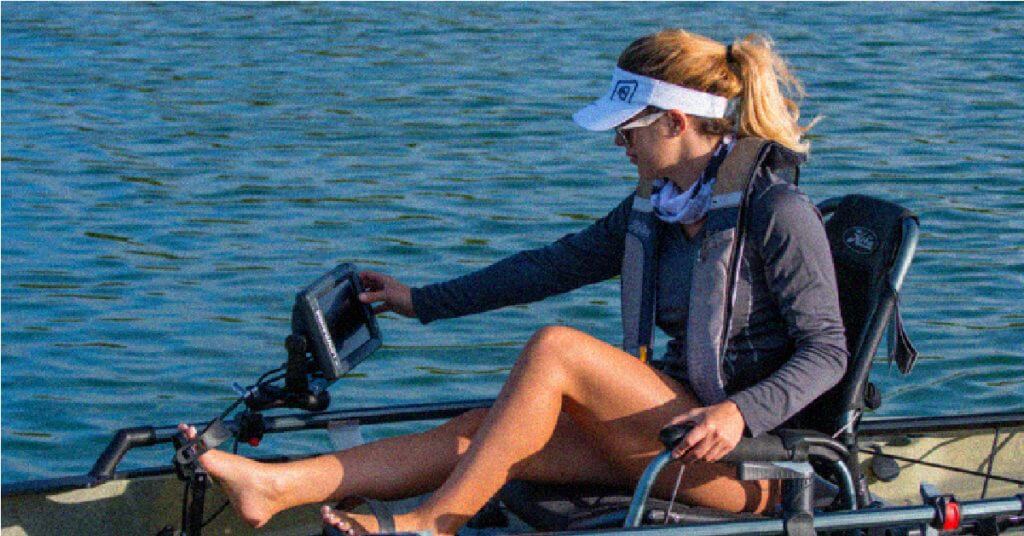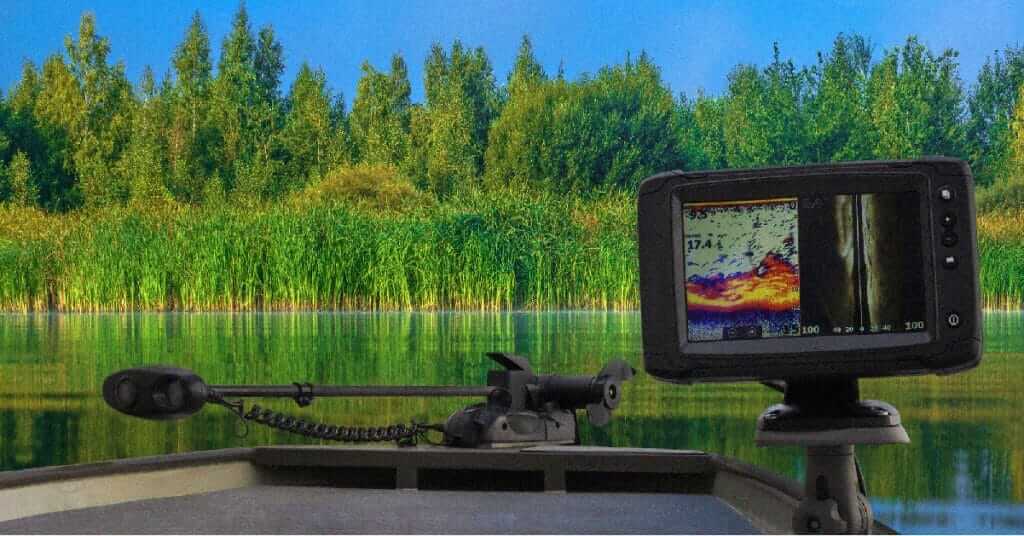We independently research, test, and recommend the best products; you can learn more about our review process here.
With every passing day, more and more new fishing technology hits the market.
I’ve found that even old-time anglers are starting to get on board with a lot of the newer things they would have hated themselves for buying years ago.
One comparison I’ve been asked to do is a fish finder vs depth finder breakdown.
The purpose of basic depth finders is to measure water depth whereas fish finders provide much more information.
However, the functions of both these devices can overlap to some extent as you shift towards advanced devices.
Let’s take a look.
Fish Finder vs Depth Finder: What’s the Difference?
While both depth finders and fish finders use sonar technology to gather data, the primary difference between a fish finder and a depth finder is the data that it will collect. A depth finder can only provide information about water depth. While a fish finder will provide data on fish, structure, things in the water, depth, and much more.
What is a Fish Finder?
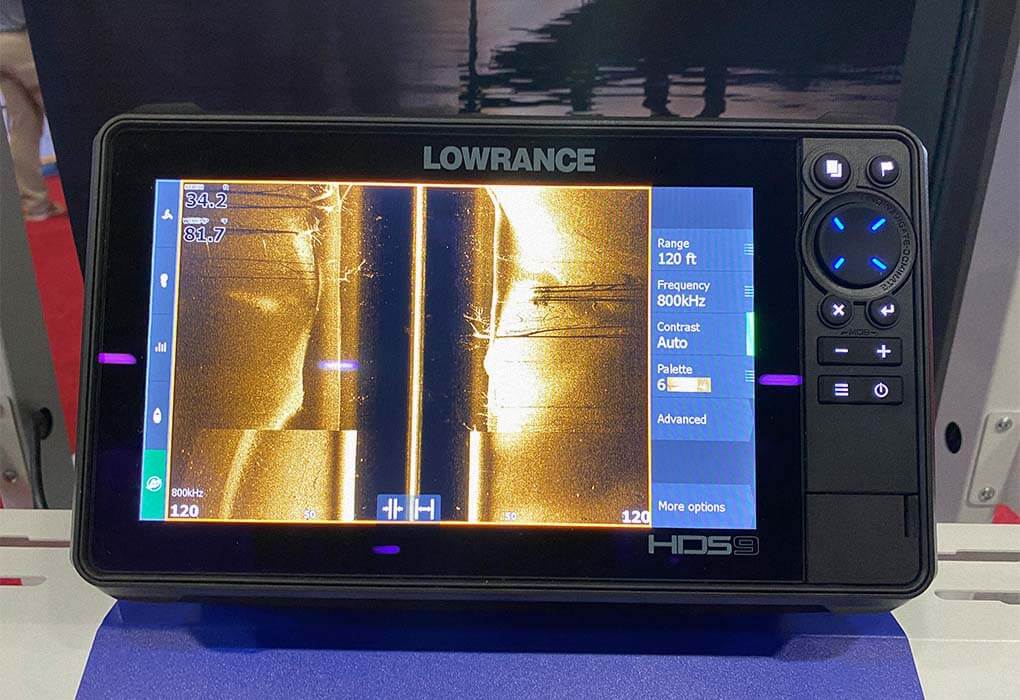
A fish finder is a device that uses one or multiple sonar beams to help anglers locate fish in a water column.
The core element of fish finder technology is an active transducer that emits sound waves.
The transducer determines the distances and orientation of the underwater objects and their depth.
An image of the underwater objects is generated on the screen.
Note, the capability of a fish finder depends on the sonar frequency. The frequency range in a fish finder can range from 15 kHz to 200 kHz.
Different fish finders have different depth ranges. Based on the frequencies, the beams can also be classified into wide and narrow beams.
As you may know, lower frequencies are best for deep waters which can be more than 200 feet. Higher frequencies are ideal for reading shallower depths above 200 feet.
However, a high frequency will capture better data and deliver sharper images.
That’s why dual-frequency sonars are more effective in pointing out more varieties of fish.
Fish finders come in various sizes and price ranges based on their features.
High-end models can have multiple transducers to produce a 3D image of the bottom surface.
Main Features of a Fish Finder
Actually, the features of a fish finder depend on the type of device you choose. Advanced devices come with more features.
I don’t want to dive too deep because advanced models have tons of features. Here’s a look at some of the important ones.
CHIRP Sonar and Side Imaging
Fish finders with CHIRP sonar that use multiple frequencies deliver excellent bottom imaging and details.
Some fish finders also provide a side-scan feature that allows you to see the areas left and right of your boat.
Apart from the topography, this also helps you to identify the underwater vegetation, rocks, trees, and other structures.
Advanced 360-degree imaging capability can give anglers a wide-angle view of the area under the boat.
Integrated GPS
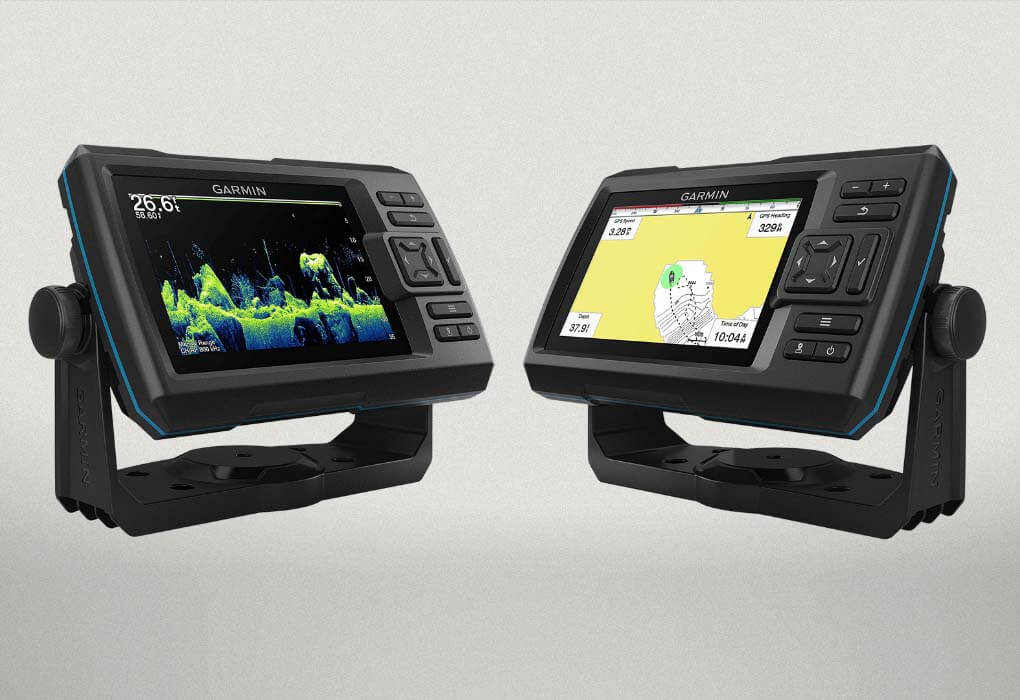
Some GPS fish finders also come with a high-quality GPS receiver that allows users to mark the best fishing spots. This helps in saving time and effort while revisiting a spot.
The trolling motor can follow a contour line from the GPS to take you to the right spot automatically.
These units also allow users to store maps and even create their own maps. The data can be easily shared with fellow anglers.
Advanced Features
A fish finder can also measure the water temperature and inform you about the speed of the boat.
In addition, they can have advanced features like alarms and LED flashers for night fishing.
Other than that, there are features like making notes and measuring boat speed.
Also, portable units come with in-built WiFi or Bluetooth to ensure easy connectivity with smart devices.
Display
A powerful transducer will be useless unless the data is displayed on a high-quality screen.
So fish finders have a display with a higher pixel count.
Units with a bigger screen size make it even easier to read the data. You also get features like a touchscreen and multiple color modes.
Price
A good thing about fish finders is, they are available in a wider price range.
While professional users can choose a high-end transom-mount device, there are smaller, affordable, and castable fish finders for shore fishing.
What is a Depth Finder?
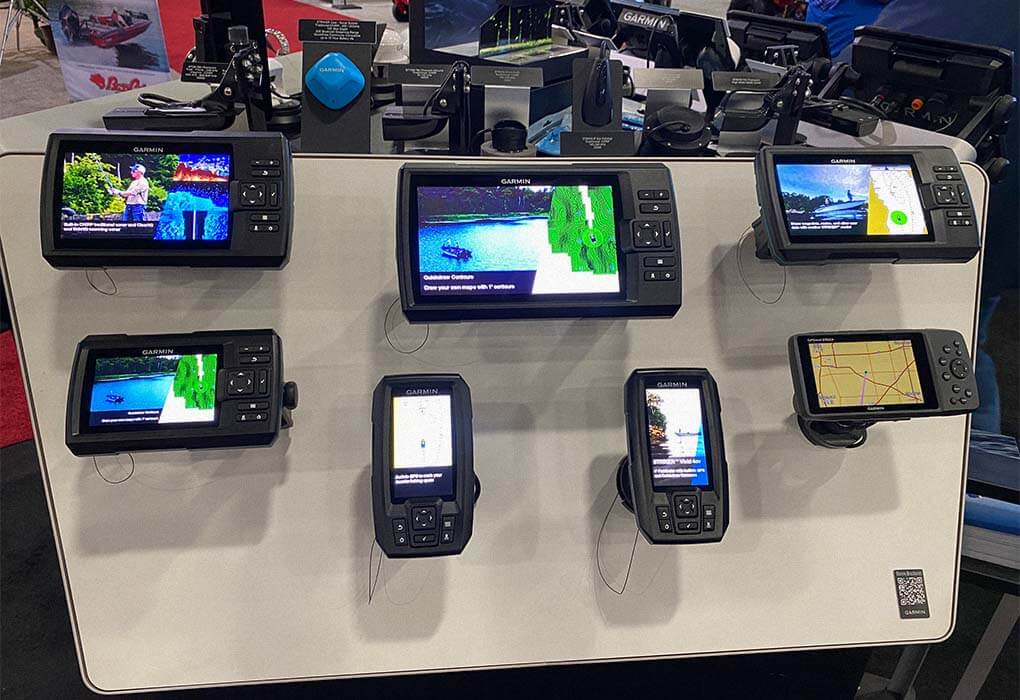
The primary function of a depth finder is to measure the water depth. Like fish finders, this device also uses a sonar or sound wave and captures the returning echo.
The time passed between the two events is used to measure the depth of the bottom.
Depth finders also come in various forms. Basic depth finders are compact and easy to use.
They are mostly used in shallow conditions and provide a digital readout.
However, high-end depth sounders from brands like Garmin or Lowrance come with various advanced features.
These include features like CHIRP sonar, real-time mapping, and automatic routing support.
They also have multiple modes for use in various fishing conditions.
The data is displayed on a high-resolution screen with loads of other information that helps in making the perfect cast.
Some top-end models also come with features like night vision technology.
Perhaps you’re thinking, “that sounds very similar to a fish finder!”
Actually, it does. As I mentioned, when it comes to higher-end models there are many similar features.
That said, advanced depth finders are not only useful for pro anglers but are also essential for the navy and merchant ships.
They help to identify submerged rocks and shoal water and prevent running aground.
Main Features of a Depth Finder
Here are some of the main features that you will find useful.
Powerful Sonar Transducer
Depth finders have a built-in transducer that can have a range of around 200 feet to 300 feet. These transducers are powerful enough to deliver accurate readings instantly.
Top-end products also come with CHIRP as in fish finders.
Durable Design
Handheld depth finders come with a durable ABS casing and a waterproof rating.
So you can use them underwater. They are also floatable and have backlit display screens.
Besides, since these devices are powered by alkaline batteries, they are lightweight and super portable.
Easy to use
Handheld depth finders need no setup and are easy to use.
All you need to do is immerse the unit in water and press the button to get the depth reading.
However, advanced depth sounders can’t be used from the shore or a kayak.
They will need proper mounting and you need to get used to interpreting loads of data to make the best use of it.
Price
Handheld depth finders are extremely affordable and come with a lower price tag than fish finders.
As you progress to more advanced models, the prices will go up.
When Should You Use a Fish Finder?

The best fish finders will provide a wide range of data that is extremely useful for picking the right spot.
And since they also measure depth, you get to kill two birds with one stone.
In many cases, it’s a matter of bang for your buck as well.
You can get plenty of fish finders under $500 that will offer far more than a mid-range depth finder.
Even so, the choice of the device will depend on your exact needs.
If you aren’t a pro angler, a castable or a medium-range fish-finder is a better choice for almost any type of fish.
When Should You Use a Depth Finder?
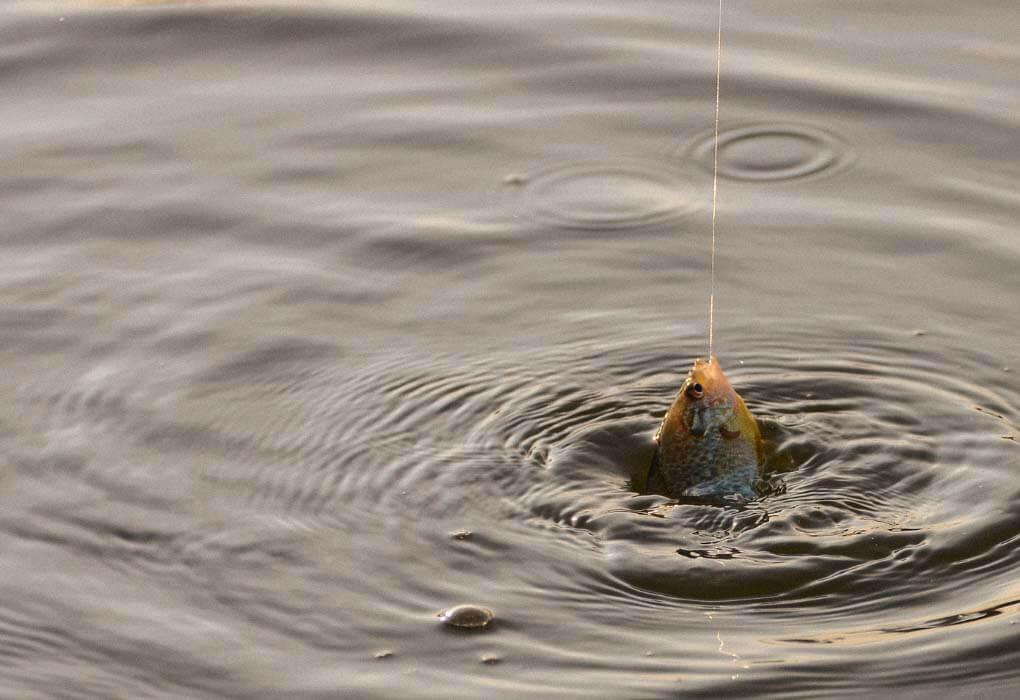
If you need to know only the depth of the water for any purpose, a depth finder is a good choice.
Such a device can also be effective if you fish in shallow waters like 20 feet to 30 feet.
In fact, experienced anglers can interpret the depth readings to determine the nature of the bottom and locate the hotspots for fish.
Also, if you’re not an angler but a boater or a kayaker, a simple depth finder is the more practical choice for safe sailing.
FAQs
Is a fish finder the same as a depth finder?
Technically, a fish finder and a depth finder make use of a sonar transducer to capture underwater data. However, a fish finder comes with more advanced features.
A basic depth finder will only provide you with the water depth.
Is a transducer a depth finder?
Transducers are the primary components in a depth finder. They generate a sonar beam and recapture a reflected beam.
These get converted into electrical signals. The screen displays the data.
Does a depth finder use sonar?
Yes, a depth finder uses sonar or sound waves.
It then calculates the depth by measuring the time taken by the wave to get reflected from an underwater object and come back to the source.
How deep can a depth finder go?
The capability of the depth finder depends on the power of the transducer.
The depth rating of the devices can range from 100 feet to beyond 700 feet
Final Thoughts
I hope this article has helped in clarifying the depth finder vs fish finder debate.
Both depth finders and fish finders use sonar technology to gather data. They can come in portable and mounted varieties as well.
While advanced units have more similarities, basic models of both devices have different uses. And it all boils down to your purpose of use.
Looking at a fish finder vs depth finder though, I would choose a fish finder because the cost is worth simply getting something that will provide more for your fishing.
Depth finders are highly limited in what information they offer.
Have you made a depth finder work for you? Let me know in the comments!

